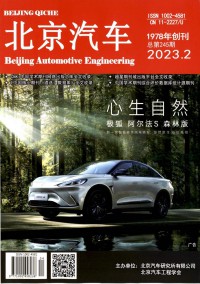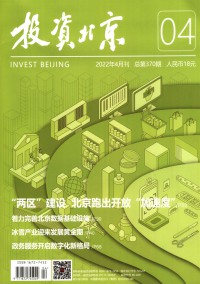北京英文导游词
前言:想要写出一篇令人眼前一亮的文章吗?我们特意为您整理了5篇北京英文导游词范文,相信会为您的写作带来帮助,发现更多的写作思路和灵感。

北京英文导游词范文第1篇
TheGreatWall
TheGreatWall,likethePyramidsofEgypt,theTajMahal(1)inIndiaandtheHangingGardenofBabylon(2),isoneofthegreatwondersoftheworld.StartingoutintheeastonthebanksoftheYaluRiverinLiaoningProvince,theWallstretcheswestwardsfor12,700kilometerstoJiayuguanintheGobidesert,thusknownastheTenThousandLiWallinChina.TheWallclimbsupanddown,twistsandturnsalongtheridgesoftheYanshanandYinshanMountainChainsthroughfiveprovinces-Liaoning,Hebei,Shanxi,Shaanxi,andGansu--andtwoautonomousregions--NingxiaandInnerMongolia,bindingthenorthernChinatogether.
HistoricalrecordstracetheconstructionoftheoriginoftheWalltodefensivefortificationbacktotheyear656B.C.duringthereignofKingChengoftheStatesofChu.ItsconstructioncontinuedthroughouttheWarringStatesperiodinthefifthCenturyB.C.whenducalstatesYan,Zhao,Wei,andQinwerefrequentlyplunderedbythenomadicpeopleslivingnorthoftheYinshanandYanshanmountainranges.Walls,then,werebuiltseparatelybytheseducalstatestowardoffsuchharassments.Laterin221B.C.,whenQinconqueredtheotherstatesandunifiedChina,EmperorQinshihuangorderedtheconnectionoftheseindividualwallsandfurtherextensionstoformthebasisofthepresentgreatwall.Asamatteroffact,aseparateouterwallwasconstructednorthoftheYinshanrangeintheHanDynasty(206BC--1644BC.),whichwenttoruinthroughyearsofneglect.Inthemanyinterveningcenturies,succeedingdynastiesrebuiltpartsoftheWall.ThemostextensivereinforcementsandrenovationswerecarriedoutintheMingDynasty(1368--1644)whenaltogether18lengthystretcheswerereinforcedwithbricksandrocks.itismostlytheMingDynastyWallthatvisitorsseetoday.TheGreatWallisdividedintotwosections,theeastandwest,withShanxiProvinceasthedividingline.Thewestpartisarammedearthconstruction,about5.3metershighonaverage.Intheeasternpart,thecoreoftheWallisrammedearthaswell,buttheoutershellisreinforcedwithbricksandrocks.ThemostimposingandbestpreservedsectionsoftheGreatWallareatBadalingandMutianyu,notfarfromBeijingandbothareopentovisitors.TheWallofthosesectionsis7.8metershighand6.5meterswideatitsbase,narrowingto5.8metersontheramparts,wideenoughforfivehorsestogallopabreast.Thereareramparts,embrasures,peep-holesandaperturesforarchersonthetop,besidesgutterswithgargoylestodrainrain-waterofftheparapetwalk.Two-storiedwatch-towersarebuiltatapproximately400-metersinternals.Thetopstoriesofthewatch-towerweredesignedforobservingenemymovements,whilethefirstwasusedforstoringgrain,fodder,militaryequipmentandgunpowderaswellasforquarteringgarrisonsoldiers.Thehighestwatch-toweratBadalingstandingonahill-top,isreachedonlyafterasteepclimb,like"climbingaladdertoheaven".Theviewfromthetopisrewarding,hoverer.TheWallfollowsthecontourofmountainsthatriseonebehindtheotheruntiltheyfinallyfadeandmergewithdistanthaze.Asignalsystemformerlyexistedthatservedtocommunicatemilitaryinformationtothedynasticcapital.ThisconsistedofbeacontowersontheWallitselfandonmountaintopswithinsightoftheWall.Attheapproachofenemytroops,smokesignalsgavethealarmfromthebeacontowersinthedaytimeandbonfiredidthisatnight.
Emergencysignalscouldberelayedtothecapitalfromdistantplaceswithinafewhourlongbeforetheinventionofanythinglikemoderncommunications.Therestand14majorpasses(Guan,inChinese)atplacesofstrategicimportancealongtheGreatWall,themostimportantbeingShanghaiguanandJiayuguan.YetthemostimpressiveoneisJuyongguan,about50kilometersnorthwestofBeijing.Knownas"TianXiaDiYIGuan"(TheFirstPassUnderHeaven),ShanghaiguanPassissituatedbetweentwosheercliffsforminganeckconnectingnorthChinawiththenortheast.Ithadbeen,therefore,akeyjunctioncontestedbyallstrategistsandmanyfamousbattleswerefoughthere.ItwasthegateofShanghaiguanthattheMinggeneralWuSanguiopenedtotheManchuarmytosuppressthepeasantrebellionledbyLiZichengandsosurrenderedthewholeMingempiretotheManchus,leadingtothefoundationoftheQingDynasty.(1644-1911)JiayuguanPasswasnotsomuchasthe"StrategicpassUndertheHeaven"asanimportantcommunicationcenterinChinesehistory.Cleftbetweenthesnow-cappedQilianMountainsandtherollingMazongMountains,itwasontheancientSilkRoad.ZhangQian,thefirstenvoyofEmperorWuDioftheWesternHandynasty(206B.C-24A.D),crosseditonhisjourneytothewesternregions.Later,silkflowedtothewestthroughthispasstoo.Thegate-towerofJiayuguanisanattractivebuildingofexcellentworkmanship.Ithasaninnercityandanoutercity,theformersquareinshapeandsurroundedbyawall11.7metershighand730metersincircumference.Ithastwogates,aneasternoneandawesternone.Oneachgatesitsatowerfacingeachother.thefourcornersofthewallareoccupiedbyfourwatchtowers,oneforeach.Juyongguan,agatewaytoancientBeijingfromInnerMongolia,wasbuiltina15-kilometerlongravineflankedbymountains.ThecavalrymenofGenghisKhansweptthroughitinthe13thcentury.AtthecenterofthepassisawhitemarbleplatformnamedtheCloudterrace,whichwascalledtheCrossing-StreetDagoba,sinceitsnarrowarchspannedthemainstreetofthepassandonthetopoftheterracethereusedtobethreestonedagobas,builtintheYuanDaynasty(1206-1368).Atthebottomoftheterraceisahalf-octagonalarchgateway,interestingforitswealthofdetail:itisdecoratedwithsplendidimagesofBuddhaandfourcelestialguardianscarvedonthewalls.Thevividnessoftheirexpressionsismatchedbytheexquisiteworkmanship.suchgrandioserelicsworks,withseveralstonespiecedtogether,arerarelyseeninancientChinesecarving.Thegatejambsbearamulti-lingualBuddhistsutra,carvedsome600yearsagoinSanskrit(3),Tibetan,Mongolian,Uigur(4),HanChineseandthelanguageofWesternXia.Undoubtedly,theyarevaluabletothestudyofBuddhismandancientlanguages.Asaculturalheritage,theWallbelongsnotonlytoChinabuttotheworld.TheVenicechartersays:"Historicalandculturalarchitecturenotonlyincludestheindividualarchitecturalworks,butalsotheurbanorruralenvironmentthatwitnessedcertaincivilizations,significantsocialdevelopmentsorhistoricalevents."TheGreatWallisthelargestofsuchhistoricalandculturalarchitecture,andthatiswhyitcontinuestobesoattractivetopeopleallovertheworld.In1987,theWallwaslistedbyUNESCOasaworldculturalheritagesite.
Notes:1.theTajMahalinIndia印度的泰姬陵2.theHangingGardenofBabylon巴比伦的空中花园3.Sanskrit梵语4.Uigur维吾尔语
Therestand14majorpasses(Guan,inChinese)atplacesofstrategicimportancealongtheGreatWall,themostimportantbeingShanghaiguanandJiayuguan.YetthemostimpressiveoneisJuyongguan,about50kilometersnorthwestofBeijing.
Knownas"TianXiaDiYIGuan"(TheFirstPassUnderHeaven),ShanghaiguanPassissituatedbetweentwosheercliffsforminganeckconnectingnorthChinawiththenortheast.Ithadbeen,therefore,akeyjunctioncontestedbyallstrategistsandmanyfamousbattleswerefoughthere.ItwasthegateofShanghaiguanthattheMinggeneralWuSanguiopenedtotheManchuarmytosuppressthepeasantrebellionledbyLiZichengandsosurrenderedthewholeMingempiretotheManchus,leadingtothefoundationoftheQingDynasty.(1644-1911)
JiayuguanPasswasnotsomuchasthe"StrategicpassUndertheHeaven"asanimportantcommunicationcenterinChinesehistory.Cleftbetweenthesnow-cappedQilianMountainsandtherollingMazongMountains,itwasontheancientSilkRoad.ZhangQian,thefirstenvoyofEmperorWuDioftheWesternHandynasty(206B.C-24A.D),crosseditonhisjourneytothewesternregions.Later,silkflowedtothewestthroughthispasstoo.Thegate-towerofJiayuguanisanattractivebuildingofexcellentworkmanship.Ithasaninnercityandanoutercity,theformersquareinshapeandsurroundedbyawall11.7metershighand730metersincircumference.Ithastwogates,aneasternoneandawesternone.Oneachgatesitsatowerfacingeachother.thefourcornersofthewallareoccupiedbyfourwatchtowers,oneforeach.
北京英文导游词范文第2篇
hello,everyone,
wearenowgoingtopayavisittoaplaceofspecialinterest.thisscenicspotislocatedatthecenterofbeijingandischaracterizedbythousandsofpalatialarchitecturesandpurplewallsaswellasyellowglazedtileroofs-itissimplyaseaofpalaces.thisistheworld–famouswonder–thepalacemuseum.
thepalacemuseumhasservedastheroyalresidenceduringthemingandqingdynasties.itwasherethatatotalof24monarchsascendedthethroneandwieldedpowerforsome500years.thepalacemuseum,asthemostbeautifulspotofinterestthroughoutbeijing,isuniqueforitslocation:tothenorthwestisbeihai(northsea)park,famousforitswhitepagodaandripplinglake;tothewestisthezhongnahai(centralandsouthsea);totheeastliesthethewangfujingshoppingstreet;andtothenorthidjinshanpark.standinginthewanchun(everlastingspring)pavilionatthetopofjingshan(charcoalhill)park,youoverlooktheskylineofthepalacemuseum.atthesouthernendofthepalaceistian`anmen(gateofheavenlypeace)andthefamoussquarenamedafterit.thisisthesymbolofthepeople`srepublicofchina.
aworld-famoushistoricalsite,thepalacemuseumisontheworldheritagelistofunescoandisanembodimentoforientalcivilization.
thepalacemuseumisrectangularinshape,960meterslongfromnorthtosouthand750meterswidefromeasttowest,coveringaspaceof720,000squaremetersofwhich150,000isbuildingarea.ithas9000-strongroomsinit.accordingtolegendthereare9999.5room-unitsinall.thewholecompoundisenclosedbya10-meter-hignwallandisaccessedthroughfourentrances,namely,themeridiangateinthesouth,thegateofmilitaryprowessinthenorth,donghua(easternflowery)gateinthenorth,donghua(easternflowery)gateintheeastandxihua(westernflowery)gateinthewest.oneachcornerthereisaturretconsistedof9roofbeams,18pillarsand72ridge.encirclingthecompoundthereisa3,800-meter-longand52meter-widemoat,makingthepalacemuseumaself-defensivecity-within-acity.
thepalacemuseumwasmadeacenterofruleduringthemingdynastybyzhundi,thefourthsonofthefoundingemperorzhuyuanzhang.thewholecomplexstraddlesonan8-kilometers-longcentralaxisthatstretchesfromyongding(foreverstable)gateinthesouthtogulou(drumtower)inthenorth.prominencewasgiventotheroyalpowerbyputtingthe“threemainfronthalls”and“threebackhalls”ontheaxiswhilearrangeothersubsidiarystructurearoundthem.theconstructionofthepalacemuseuminvolvedmanpowerandresourcesacrosschina.forexample,thebrickslaidinthehalls,knownas“goldbrick,”underwentcomplex,two–dozenprocesses.asthefinaltouch,thefiredbricksweredippedinchinesewoodoil.involvingcomplicatedprocessesandhighcost,thesebrickarecalled“goldenbricks.”thepalacemuseumservesasalivingembodimentofgoodtraditionandstylesuniquetochina`sancientarchitecture.itreflectstothefulltheingenuityandcreativityofthechineseworkingpeople.acarefullypreservedandcompletegroupofroyalresidences,thepalacemuseumisaprominenthistoricalandtouristsite.
whatwearenowapproachingisthemainentrancetothepalacemuseum-themeridiangate,whichischaracterizedbyredwalls,yellowglazed–tileroofsandupturnedeaves.ontopofthiswalls,yellowglazed-tileroofsandupturnedeaves.ontopofthismagnificentbuilding,therestandfiveloftyhallswithamainhallinthecenter.themainhallisroofedbymultipleeavesandcoversaspaceof9room-units.itisflankedbytwowingsoneachside.thewingsaresquareinshape,completewithmultipleandfouredgedeavesandpinnacles.allofthesestructuresareconnectedbyacolonnade.becausethesehallsresembleasoaringbird,itwasalsoknowaswufenglou(five-phoenixtower).insidethemainhallthereisathrone.drumsandbellswerestoredinthewings.whenevertheemperorpresidedovergrandceremoniesorobservedritesinthehallofupremeharmony,drums,bellsandgongswouldbestrucktomarktheoccasion.
asthelegendgoes,themeridiangateusedtobeaplacewherecondemnedrankingofficialswouldbeexecuted.thisnottrue.however,floggingwascarriedoutherebythemingemperors,ifacourtierfallsafouloftheemperor,hewouldbestrippedofhiscourtdressandfloggingwithastick.atonepointthepunishmentbecamesoharshthatatotalof11peoplediedfromfatalwoundonasingleoccasion.ontheotherhand,thisbuildingwasalsousedtoobserveimportantoccasionslikethetraditionalchineselanternfestival(15thdayofthefirstlunarmonth).ontheseoccasions,chineselanternswouldbehangedandsumptuousbanquetswouldbegiveninhonourofthewholecourtofministersandotherrankingofficials.
uponenteringthemeridiangatewebeganourtourofthepalacemuseum.theriverfoowinginfrontofusisknownasjinshuihe(goldenwaterriver)andthefivemarblesbridgesspanningitareknownastheinnergoldenwaterbridges.theoninthemiddlewasusedexclusivebytheemperoranditsbanisterswerecarvedwithdragonandphoenixdesigns.thebridgesflankingtheimperialonewerereservedforprincesandotherroyalmembers.therestwereusedbypalatines.asidefromdecoration,thegoldenwaterriverwasalsodugasprecautionagainstfire.mostofthestructureswithinthepalacemuseumaremadeofwood.whatismore,accordingtoancientchinesecosmology,thesouthistheabodeoffire,sothisbrookwasdugonthesoutherntipofthepalace.inthisway,thepalacemuseumreflectstraditionalchineseculture.
thisbuildingiscalledthegateofsupremeharmony.intheforegroundstandtwobronzelions.cananybodytellwhichismaleandwhichisfemale?theoneontheeastplayingwithaballismale,symbolizingpoweranduniversalunity.theotheronthewestwithacubcuddlingunderneathitsclawisfemale?theoneontheeastplayingwithaballismale,symbolizingpoweranduniversalunity.theotheronthewestwithacubcuddlingunderneathitsclawisfemale,representingprosperitytheendlesssuccession.alayoutofthepalacemuseumispostedbytheentrance.fromit,youcanseethatthepalacemuseumhastwomainparts:theforecourtandtheinnercourt.thethreemainhallsconstitutethemainstayoftheforecourt,anditwasherethattheemperorannounceddecisionsandobservedrites.behindtheforecourtthereistheinnercourt,consistingofmajorhallsandtheimperialgarden.itwaswheretheemperorattendedstateaffairs,livedandenjoyedhisluxuriouslife.theexhibitionsystemofthepalacemuseuminvolveshistoricalcourtrelicsandarticlesofancientartandculture.thepalacemuseumhousesnearlyonemillionarticlesofraretreasure,oronesixthofthetotalnumberinallofchina`smuseums.therearethethreemainhallsofthepalacemuseum,builtonatriplemarbleterrace.sincemostofchina`sarchitectureismadeofwood,thebuildingscannotbetootall.togaintheheightofthearchitecture,ingeniousancientartisansbuiltthehallonagiganticstoneterrace.itisalsotothisendthatnotasingleplantwasgrowninthesquare.onstairwaysoftriplemarbleterracethereare18bronzetripods.theverandahisflankedbybronzetortoisesandcranes,whichservedassymbolsoflongevity.ontheeastisasundial,anancienttimepiece.onthewestthereisagrainmeasuresuggestingthattheemperorwasjustandequitable.
inthefrontandoneachflank,thereisapairofgiltbronzevats(caldrons)moldedduringthereignofemperorqianlongoftheqingdynasty.eachoftheseweights2tonsandisfilledwithwaterasaprecautionintheeventofafire.thestructureintheverymiddleisthehallofsupremeharmony,alsoknownasthethronehall.itis64metersinwidthandis38metersfromentrancetorear.withterraceexclusive,thehallis26.92metersinheightandis35.03metersinall.coveringandareaof2,377squaremeters,thehallofsupremeharmonyischina`slargestexitingwoodenstructure.thehallissupportedby6thick,roundpillarscarvedinadesignofcoilingdragons.astheholiestplaceinthehall,theceilingandcoloredpatternsweremadeofthefinestmaterialavailableatthattime.thethronewasplacedonaterraceandisflankedbystatuesofelephants,luduan(aunicornwhichcouldtravel18,000kilometersadayandunderstandalllanguages),cranesandincensebarrels.overthethronethereisthecaisson,orcoveredceiling,whichconsistsofacoilingdragonplayingwithaballinitsmouth.thisballisknownasxuanyuanmirror,andwassupposedlymadebyachineseemperorofremotetimestoserveasareminderthattheerulerstofollowwerehishereditaryheirs.thethroneismadeofnanmuandpaintedingold.magnificentlybuiltandluxuriouslydecorated,thishalldidnotserveasaplaceinwhichtheemperorattendedtodailyaffairs.heusedhishallformajoreventssuchashisbirthday,conferraloftitleofempressordispatchofgeneralstowar.
behindthehallofsupremeharmony,theresitsthehallofcompleteharmony.thisstructureissquareinshape.eachsideis24.15meters.thiswastheplacewheretheemperorrelaxedandgreetedhiscourtiersbeforeproceedingtothehallofsupremeharmonytoobserverites.thiswasalsotheplacewheretheemperorpreparedprayersorexaminedseedsandsowersbeforeheattendedancestralsacrificesorparticipatedinsnowingceremonies.agrandceremonywasalsoheldhereonceevery10yearsfortheemperortogenealogizetheroyalblood.therearetwosedanchairsondisplayinthehall.behindthehallofcompleteharmony,youwillseethehallofpreservingharmony,whichwasusedasaplacewhereimperialexaminationswereheld.theimperialexaminationwasthehignestlevelofcompetingformeritoriousappointmentunderthefeudalsystemdatingbacktothesuidynasty.china`slastimperialexaminationwasheldin1904duringthereignofemperorguangxuoftheqingdynasty.totherearofhallthereisamarblerampcarvedwithcloudanddragondesigns,thelargestofitskindinthewholecountry.itis16.57metersinlength,3.07metersinwidth,1.7metersthickandweighs250tons.itwasquarriedinfangshancountyinsuburbanbeijing.tobringthisgiantpieceofstonetobeijingpeoplepouredwaterontotheroadandappliedrollingblocksduringtheprocess.
wearenowstandingbeforethesquareofthehallofheavenpurity.itservedasadivideseparatingtheforecourtfromtheinnercourt.thisbuildingisknownasthegateofheavenlypurity.emperorqianlongheldcourthere.proceedingfurthernorth,youcanfindthreemainrearhalls,i.e.thehallofheavenlypurity.thehallofunionandpeaceandpalaceofearthlytranquility.thehallofheavenlypurityifflankedoneithersidebytwogatesnamedafterthesunandmoon.insidetheenclosurethereare12palacesandhallssymbolizingconstellations.alloftheotherbuildingsarecenteredaroundthepalaceofheavenlypurity,whichwasmeanttosuggestthatthemonarch`spowerwasendowedbyheaven.theempressandconcubineslivedintheinnercourt.
thehallofheavenlypuritywaswheretheemperorlivedandattendedtodailyaffairs.latertheemperormovedtoliveinthepalaceofmentalcultivation.lookingupyoucanseeaplaquebearingthechineseinscription“beopenandabove-board,”amanifestotocourtstruggle.behindtheplaqueastrongboxwasstoredcontainingawillbearingthenameofthewould–beroyalsuccessor.thisapproachofsecretlyselectingthenextemperorwasadoptedbyemperoryongzhengoftheqingdynasty.twocopiesofthewillwereprepared.onewasstashedbytheemperorinperson,theotherwasplacedinsidethestrongboxbehindtheplaque.afterthedeathoftheemperor,thetwocopieswouldbecomparedandsuccessorwouldbeannounced.itwasinthiswaythatemperorqianglongandothershaveascendedthethrone.
behindthehallofheavenlypurityyouwillseethehallofunionandpeace,whichisindenticaltothehallofcompleteharmony.itwastherethattheemperorreceivedcongratulationsandtributesfromimperialofficialsonmajorcalenderoccasions,atotalof25imperialsealsarestoredthere.inthehall,youwillseeaplaquewiththehandwritteninscriptionof“wewei,”exhortingtaoistdoctrines.
furthernorthwardisthepalaceofearthlytranquillity,whichonceservedasthelivingroomoftheempresses`.thehallwaslaterconvertedintoasacrificialplace.throughthewindowpanesontheeasternwallyoucanseetheroyalbeddecoratedwithdragonandphoenixdesigns.thishallhasalsoservedasthebridalchamberofmonarchs.
北京英文导游词范文第3篇
it"s a very important point that connects huaihua hunan and tongren guizhou together.and it"s the hometown of mr shengcongwen.
fenghuang has wonderful natural landscapes,it"s very hot for travelling since the old time. even a lot of teleplays were produced here.fenghuang is also a dradle for famous people ,shencongwen and xiongxiling are both spent their childhood here.
now, let"s set out to enjoy these fantastic good views. THE FORMER RESIDENCE OF SHENCONGWEN
This is the former residence of shencongwen,a very famous auther, archaeologist and historian in china.
lined in the zhongying street in the south part of the fenghuang old town, the residence is a typical spacious ancient countryard with special tectonic style of ming and qing dynasty. walk into the yard, you can find that there is a small patio in the center of the countryard. which is built with red rock. around the patio , there are about 10 rooms which are small but decorated by special carved wooden windows .it"s so beautiful.
this countryard is built by mr shen"s grandfather in 1866 on dec.28,1902. shencongwen was born in the old countyard.and spent his childhood here. in 1917,when he was 15 years old, mr shen left family and joined the army. from 1917 to 1922, mr shen had lived with soildiers, farmers, workers and some other
common people,and know their tragic lives. this special experience stunned up his enthusiasm of writhing . so in 1919, mr shen went to beijing alone, and began his hard writing . after his series of works WEST OF HUNAN &FRINGE TOWN were punished, mr shen became nation -wide well -known.at that time, he was even
as famous as luxun, another famous auther in chiese literature area. it"s said that shencongwen is the one who is the most possible to win the prize.
mr shen devoted all his life to writing,his 5-million word works are though as the precious legacy to the world literature.meanwhile, these works are also very
veluable date for researching the history of hunan province and even china.
北京长城英文导游词 ·岳阳楼英文导游辞 ·重庆英文导游词 ·英文导游词
北京英文导游词范文第4篇
中西方文化的差异以及各方面的原因,导游员在英文导游解说过程中可能失误,提高导游英语解说能力成为旅游教育工作者所重视并研究的头等大事。
[关键词]英文导游解说词;中西方差异; 规范化
中图分类号:H059 文献标识码:A 文章编号:1009-914X(2016)05-0381-02
随着入境和出境游的发展,我国的导游翻译从业人数不断增加,导游翻译的服务质量也不断提高,但还远远满足不了游客深层次了解中国文化的需求。特别在一些内陆地区大多数导游员的英文解说水平有限,英文导游解说的不到位将直接影响中国旅游业的国际化发展,所以说规范英文导游词起着至关重要的作用。
一、英文导游解说词存在的主要问题
1、思维方式的差异
不同的民族在各的文化熏陶下衍生出不同的思维方式,这种差异使他们在语言上产生不同的联想。例如:Tourist:So you didn’t know that sudden change of itinerary beforehand, did you?Guide:Yes,I didn’t.Tourist:You didn’t mean that you knew it in advance, did you?Guide:Yes,sir.这是涉外导游受汉语语言思维的影响而误用“yes”的案例。对话背景是外宾对于突然改变了行程而向导游询问,实际上导游也是临时得知而非事先所知。确实不知情的导游本来应该回答“No, I didn’t”(是的,我不知情)。回答汉语的反义疑问句时,“是的”表达的是对整个疑问句的肯定,无论这一反义疑问句是以肯定的形式还是以否定的形式来表示。英文“yes”的作用却不同,它只是对动词的本意部分加以肯定。
2、风俗习惯的差异
风俗习惯会对人们的思想行为产生影响,各民族的风俗习惯都有特定的表现形式,且差别很大。例如:Guide:Welcome to Beijing! You are old. I am afraid you must have had a tiring trip. Tourists: We are not tired. We can go up to the Great Wall now. 对话背景是导游去机场接外宾。按中国人的习惯,通常就会说“一路辛苦了”, 这样的问候对于中国人来说是表示对对方的关怀和尊重。但是对西方人来说,结果恰恰相反,对方会觉得受到伤害,觉得自己在别人的眼中好像“身体很虚弱”,所以对外宾恰当的问候语应该说:“How was the trip?” 或“Did you have a pleasant trip?”(这次旅行如何?一路愉快吗?)或“Welcome! I have been looking forward to your coming.” (欢迎!我一直在盼望您的到来。)
3、社交方式的差异
中西方不同的生活习俗使人们有着不同的生活与社交方式,甚至汉英在简短招呼语上存在的文化差异也会造成学生无意识地出现语用失误。在中国称呼对方老张、老教授、老同志、老人家、老革命、老干部等,是表示尊敬。可是在西方old意味着风烛残年、没有用。因此西方人忌讳“老”,不愿让人觉得老了,不肯依赖和接受别人的帮助和同情。我们常常把日常社交英语中不问对方的收入、体重、年龄、宗教和婚姻状态,不问对方“你去哪儿?您吃了吗?”
4、文化背景的差异
在跨国文化交际中如果不了解对方国家的文化背景,就会出现失误。例如:Customer:I have a weakness for Chinese food! Waiter : Weakness? Is there anything wrong with Chinese food? 对话背景在餐厅,外宾赞扬中国菜,但是显然服务员把“weakness”的意义单纯理解成为“弱点、缺陷”,觉得外宾对中餐有偏见。通常在说到食物、艺术、服饰等涉及喜好的问题时,“weakness”表示“special and excessive fondness for something”,所以外宾所说的是赞扬中餐美味的意思。这是将英语里的多义词与中文进行对等选择时,意义范围对等错位造成的。实际上服务员应该回答:I am so glad to hear that. I really hope you can enjoy your diner here!
三、规范英文导游解说词的措施
1、加强英语本身语言学习
1.1 意义语境和引申
导游词的翻译实质上就是两种语言的转换,中文可以说是世界上最复杂的语言之一,复杂之一便在于意义语境。语境是各种各样的,所以中文的词义也是千变万化的。同样一个词在不同的上下文中有不同的含义,这就需要英文导游员在对导游词翻译的过程别加以注意。我们看下面的例子:
襄樊的古城池始建于汉代;周长7公里。
译文:The ancient city wall in Xiangfan, with a perimeter of 7km, was first built in the Han Dynasty (206 B.C. ~ 220A.D.).
襄樊在战国时为楚国的重要城池。
译文:During the Warring States Period (475-221B.C.), Xiangfan was an important city of the State of Chu (907 ~ 951A.D.).
虽然以上两个句子当中都有“城池”,但“此城池非彼城池”,意义不一致,故导游员在翻译时也需要区别对待,做不同的处理(英文下划线部分)。
此外,英文导游员在解说过程中会遇到某些连在词典上都难以找到适当对应词义的单词,这时绝不能生搬硬套,否则会使译文晦涩难懂,不能确切地表达原意,甚至会造成误解。这时英文导游员需根据上下文,从该词的根本含义出发,进一步加以引申,选择较恰当的词汇来表达,比如:
在衡阳地质公园里,奇峰三千,拔地而起。
译文:Hengyang geopark boasts no less than 3,000 vivid-looking peaks shooting out from the ground.
在此例当中,导游员面对“拔地而起”这个中文词语,完全可以依照其原
本含义引申开来,这样处理起来就不难了。
1.2 主语省略和增添
一般来说,英文中省略主语是有特殊限制的,如祈使句和感叹句,大多情况是一定要有主语的。比较而言,中文在主语省略这点上要自由得多。所以,碰到这类省略主语的中文句子,在译成英文时,要特别注意主语的确定,也就是要增添句子的主语。我们看看下面的例子:
如果站在恒山脚下朝上仰望,悬空寺就仿佛悬在空中似的。
译文:Examined from the foot of Hengshan Mount, Xuankong Temple seems to be
suspending in midair.
此句如果是以Examining开头,那么还是要以人为主语;但导游员在处理时,显然用Examined更符合英文的行文习惯。
1.3 语态被动和主动
在英语中我们常常会碰到被动句,被动语态的使用范围很广,凡是遇到不想说出主动者、没有必要说出主动者或为了便于上下文连接的时候,都可以用被动句。相比之下,中文被动句不如英文里的那么多见,使用范围也狭窄得多。中文的被动句一般是不得已的,只是少量使用。导游员在翻译导游词的时候,不要受到中文主动句的严格束缚,有时可有意识地运用被动语态。例如:
这个地区风景如画、气候温和、四季分明、物产丰富。
This picture-like region is blessed with a moderate climate of distinctive seasons and rich produce.
此例如果不用被动语态进行处理,则很难将它翻译得很“英语化”。培养熟练使用英语被动语态的意识,可以使导游员充分减低翻译时的决策风险。
1.4 英文句子的形合
在中译英时,要揣摩句子间的内在意义关系,不要因为已习惯于中文的并列结构而在英语中也过多地用连词,这样句子单薄而平淡无味。我们应注重英语形合的特点,在理解透中文的意思后,再选择适当的形合方式来组织句子,这样译文才会既准确又生动。关键是理解透原文的意思,再用另一种语言并通过符合这种语言习惯的方式表达出来,要注重意义而不能拘泥于形式。例:
壶口瀑布高20多米,宽20-30米,流量1000 m3/s,滚滚而下如天河倾泻。
译文:The Hukou Cataract is over 20 meters high and 20-30 meters wide. With a flow of 1000 m3/s, huge amounts of water seem like pouring from the sky.
此句导游词的翻译,充分考虑了中文原句的并列结构,在理解原文意思的基础上处理好了其内在意义关系,翻译后取得了较好的形合效果。
1.5 句子的结构合并
中英文句子构成方法不同,中文是意合的,有很多并列的、无关联词连接的分句;英语句则是形合的,一般比中文句要长。因而中译英时,如果想让英文流畅自然,我们需将意合的中文句进行结构合并处理。如:
北京地处华北平原的西北端,北枕燕山,西依太行,东近渤海,南面平川。
译文:Beijing sits on the northern edge of the North China Plain, with Mount Yanshan to its north, the Taihang Mountains to the west, the Bohai Bay to the east and vast plains to the south.
可以看出,中文为了变化的需要,用了四个动词“枕”、“依”、“近”、“面”,而英语中由于恰当地运用了介词短语,使文字言简意赅,收到事半功倍的效果,符合英语文字的简练原则。
2、教、学、做合一
当学生有了一定的语言技能(听说读写),并且初步掌握了系统的中西方文化差异后,采用课堂中教、学、做合一的教学法,创造语言环境,营造以学生为中心的课堂交际情景。语言学家Little Wood说过:“课堂中的交际越真实越频繁,自然环境和课堂环境学习的界限就越模糊。”教师应让课堂成为学生语言实践的场所,在课堂内加入大量的以学生为主导的口语训练活动,如situational conversation, pair work,role play,group discussion,debating等多种形式。将语言知识的学习融于语言使用的活动中,使语言能力和语用能力的发展紧密结合起来。教师还可以创造模拟场景,使学生身临其境,掌握打电话、看病、购物、用餐、乘车、送行、接机、旅行、入住酒店、结账等语言功能。这种情景教学不仅能使学生对所学内容记忆深刻,而且一旦在生活中碰到类似语境,学生能从容应对。
参考文献
[1] 王得杏. 跨文化交际的语用问题[J].外语教学与研究,1990.
[2] 陈刚. 旅游翻译与涉外导游[J].2004年第1版
北京英文导游词范文第5篇
关键词: 旅游英语 翻译 跨文化意识
旅游是现代的第三产业,被誉为当代的“无烟工业”,同时又是一种非常典型的跨文化交际行为。所谓跨文化交际意识,其实是一种翻译观、一种态度,是有效实现跨文化交际的前提。随着我国旅游事业的蓬勃发展和世博的推进,越来越多的外国人来到中国观光旅游。有鉴于此,我们不但应了解全球的文化,更应该让中国文化走向世界。因此,在旅游英语的翻译过程中,跨文化意识显得尤为重要。
1.景点和历史人物名字翻译的跨文化意识
这类专有名词的具体译法包括意译、直译、音译、意译加音译、直译加音译、意译加直译等几种。然而,什么情况下采用什么译法就需要译者具备敏锐的跨文化意识。例如,“炼丹湖”,有的地方直接翻译成Liandan Lake,就无法把这个景点的含义有效地传递给不同文化背景的外国人;若翻译成Immortality-pill-making Lake则偏重了对文化内涵的理解,在最大程度上确保了译文与原文的最大近似值。关于“西湖十景”之一的“断桥残雪”先后出现过很多译名:Snow on the Broken Bridge(断桥之雪),Melted Snow on the Broken Bridge(断桥上融化了的雪)等。显然,这些译名都没有把“残”字表达出来。相比之下,选尽可能与意境靠近的形容词会好很多,即Remnant Snow on the Broken Bridge和Lingering Snow on the Broken Bridge。同时,可以用外国人熟知的人名去比拟,利用跨文化意识传递原文信息。例如,把美女西施比作西方人心目中的Cleopatra,译为“Chinese Cleopatra”,将梁山伯与祝英台比作莎士比亚笔下的Romeo与Juliet,济公译作Chinese Robin Hood。通过这些翻译,外国游客便能心领神会了。
2.诗词翻译的跨文化意识
中国文化和西方文化之间存在着诸多“隔”与“不隔”的问题。翻译中国古诗词给讲英语的旅游者听,是否能使所译的诗词产生美感,产生现场效果,关键问题在于译作是否产生了文化隔阂,致使旅游者难以“知之”,更谈不上“好之”和“乐之”了。例如,宋朝诗人杨万里的《晓出净慈寺送林子方》:
毕竟西湖六月中,
风光不与四时同。
接天莲叶无穷碧,
映日荷花别样红。
翻译这首诗时需要特别指出的有两点:首先,诗中的“六月”指的是夏历六月,不能直接译成“June”或者“sixth month”;其次,诗开头的两字“毕竟”主要是为了借助它强调“风光不与四时同”的特定地点与时间。所以,为了使外国游客更好地理解这首诗,作如下翻译较为恰当:
After all it’s the West Lake in summer hot,
Displaying scenes no other seasons have got:
Green lotus leaves stretch so far to the ruddy horizon,
Bathed in sunshine are exceptionally pink lotus blossoms.
再例如,有人在翻译坡的“欲把西湖比西子,淡妆浓抹总相宜”时,先后把“西子”译成“the fair lady(at her best)”和“Beauty of the West”,并加注:Beauty of the West指“Xi Shi(fl.482B.C.),a beautiful lady born near West Lake”。通过必要的铺垫和比喻,在很大程度上能化“隔”为“不隔”。
3.餐饮翻译的跨文化意识
中华美食享誉全球,川、鲁、粤、闽、苏、浙、湘、徽菜系各有千秋。随着中国旅游业的快速发展,餐饮作为旅游业的重要一部分也面临着国际化和走向世界的问题。向国际友人推广介绍中国餐饮,让他们了解中国菜所蕴含的丰富的中国文化底蕴,也是跨文化交际的一部分。因此,跨文化意识在餐饮的翻译中也是必不可少的。而菜名的翻译方法非常灵活,同一道菜可以采用不同的方法进行翻译。菜肴的翻译重点是真实地译出菜的内容,让外国游客了解吃的是什么,本道菜是如何烹制出来的。这样的话,顾客便不至于看到菜单还一头雾水。
(1)以本道菜所用的主要原料开头
主料+(with)辅料
例如:宫保鸡丁Chicken Cubes with Chili Pepper and Peanuts
桂花童子鸡Spring Chicken with Osmanthus
主料+(with,in)味汁
例如:糖醋排骨Pork Chops with Sweet and Sour Flavor
贵妃鸡Chicken Wings and Legs with Brown Sauce
(2)以本道菜的烹饪方法开头
烹饪方法+主料
例如:火腩扣大虾Steamed Dried Prawn
红焖肘子Braised Pork Joint
烹饪方法+主料+(with)辅料
例如:京葱羊肉Steamed Sliced Mutton with Beijing Scallion
扒鲍鱼菜心Grilled Abalone with Fresh Vegetable
(3)以形状或者口感开头
形状(口感)+主料+(with)辅料
例如:酥香鹌鹑Crisp Quail with Sesame
血豆虾片Sliced Shrimps with Snow Peas
形状(口感)+主料+(with)味汁
例如:盐烤荷叶鸭Salt Baked Duck in Lotus Leaf
黄酒脆皮虾仁Crisp Shrimps with Rice Wine Sauce
(4)以本道菜的创始人或者发源地开头
创始人(发源地)+(烹饪方法)+主料
例如:麻婆豆腐Mapo Bean Curd
东坡肘子Dongpo Pork Joint
由此可见,恰当地翻译菜名对外国游客了解中国餐饮文化大有裨益。
4.导游词翻译中的跨文化意识
导游词在旅游活动中占有很大的比重,导游词的翻译得当与否,直接关系到旅游这一跨文化交际行为的效度、深度和广度。而导游词翻译又具有相当大的灵活性、可能性和可行性。如“女儿红”(Daughter’s Wine)、“状元红”(Scholar’s Wine)。参观动物园,可以主动结合“狐假虎威”、“老虎屁股摸不得”(比较not to beard the lion)、“猫哭耗子假慈悲”(比较“鳄鱼的眼泪”)等成语故事进行讲解。再如:作为中国常见的植物,“雨后春笋”被汉文化的大众普遍理解的“欣欣向荣、大片出现”的象征,而英国环境中缺乏“竹笋”这一实物,因此如果照实翻译成babmoo shoots after spring rain,难以让外国游客产生同等感受。所以可以翻译成“雨后蘑菇”(mushroom after spring rain),因为“雨后蘑菇”是国外常见的现象,能够使他们领会到源语的含义。中国人都熟悉的“狗不理包子”如果翻译成“Steamed Dumpling”,就不能满足部分想了解中国文化的外籍人士的需求,所以后来就有人把它翻译成“Dog Won’t Leave”,意为狗离不开包子,自然就顾不上理会他的主人了。
5.结语
我们的时代是全球化时代,跨文化交际已成为这个时代的一个突出特征。不同文化之间的时空关系也逐渐被打破。旅游资料起着一个很好的对外宣传作用。但旅游资料的翻译中广泛存在着文化差异问题。为了达到既忠实原文,又能增加外国游客兴趣的双重目的,就需要翻译者合理地运用跨文化意识对其进行有效翻译,从而弥补不同文化之间的差异。
参考文献:
[1]陈刚.旅游翻译与涉外导游[M].中国翻译,2002.
[2]贾玉新.跨文化交际学[M].上海:上海外语教育出版社,1997.
[3]金惠康.跨文化旅游翻译[M].北京:中国对外翻译出版公司,2004.
免责声明:以上文章内容均来源于本站老师原创或网友上传,不代表本站观点,与本站立场无关,仅供学习和参考。本站不是任何杂志的官方网站,直投稿件和出版请联系出版社。


